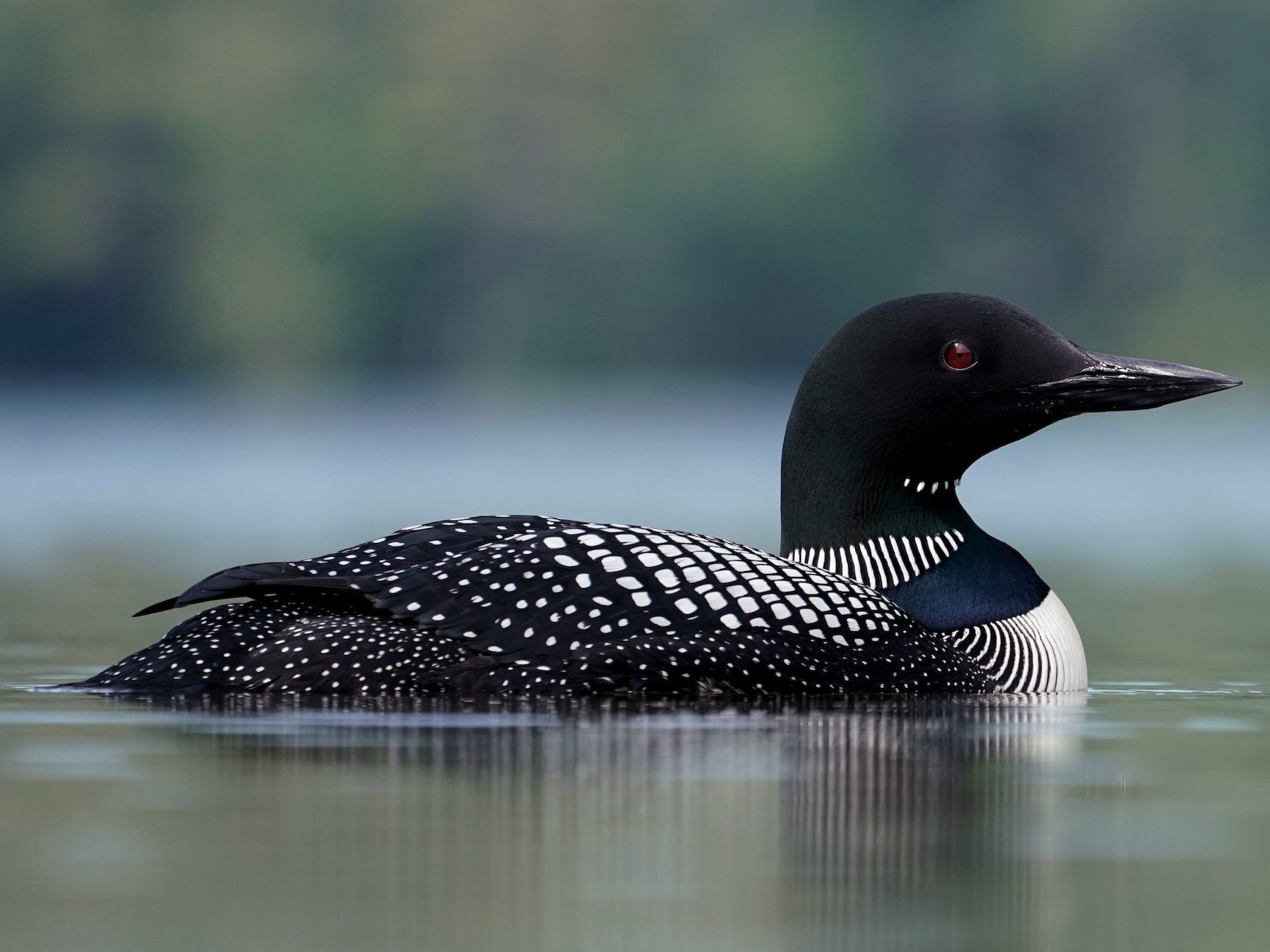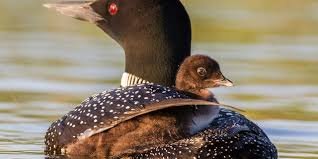Loons
The common loon is a species of aquatic birds that are found all across the Northern Hemisphere. They live up to 30 years and, when fully grown, are 28-32 inches long, have a wingspan of about 46 inches, and weigh somewhere between 9 and 12 pounds. In the summer, Loons live and mate in Northern aquatic environments. During these months, they are black with many white stripes and dots. In the winter, Loons migrate South (not anywhere further than the US-Mexico border) and live along coastal regions. During this time, they are gray and keep a lower profile. Their predators include snapping turtles, skunks, raccoons, and foxes. Under the Federal Migratory Bird Threat Act, Loons are a protected species. This makes harming a loon in anyway illegal.

Life Cycle
A male and female loon pair will nest together in late May or early June. The pair will then mate, producing 1 to 2 eggs. The eggs are then incubated by the mother for roughly a month before they hatch. The loon chicks live with their parents for 11 weeks before they leave the chicks to face the world alone. The young loons then learn to fly by 12 weeks old, which is around the same time they begin to hunt for their own food. By the time they are about a year old, they become juvenile loons. Chicks and juvenile loons have a largely gray feathering with different patterns than adults. Once loons leave the juvenile stage, they become immature loons. Immature loons have a much paler collar than adult loons and they have a dagger-like bill. At age four, the loons are fully grown adults and begin breeding. Adult loons have a hefty bill with black and white checkering on their back.
Listen to a Loon Call:
Diet
Loons are carnivores and will eat most small to mid sized aquatic animals. The main component of their diet is fish, complemented by crayfish, frogs, leeches, snails, and other animals. They find their prey through sight, which is why you will often see loons floating on their surface with their head under water. Loons dive underwater to catch their prey. They can swim at speeds up to 20 miles per hour and can hold their breath as long as five minutes.
Loons on Horn Pond
Due to its Northern location, Horn Pond only sees Loons during the summer month. Typically, there are anywhere from 2-10 loons on Horn Pond a summer. Loons often mate on Horn Pond and every few years there is a family of loons on the lake. The lake’s mix of human activity and wilderness allows loons to live in an environment free of most predators but with space to avoid humans. Horn Pond also possesses an abundance of food for these tuxedoed avians, making it an ideal spot for nesting. We love our loon friends on the lake and share the water with them as best we can!

Loon Conservation
Loons were once classified as an endangered species, however, through substantial ecological efforts their populations have been restored. In New Hampshire, there are more than 780 adult loons and over 2,800 in Maine. However, these creatures still face many threats, including motor boats, hunting, and a depletion of prey. To learn how to best protect and preserve loons, visit





